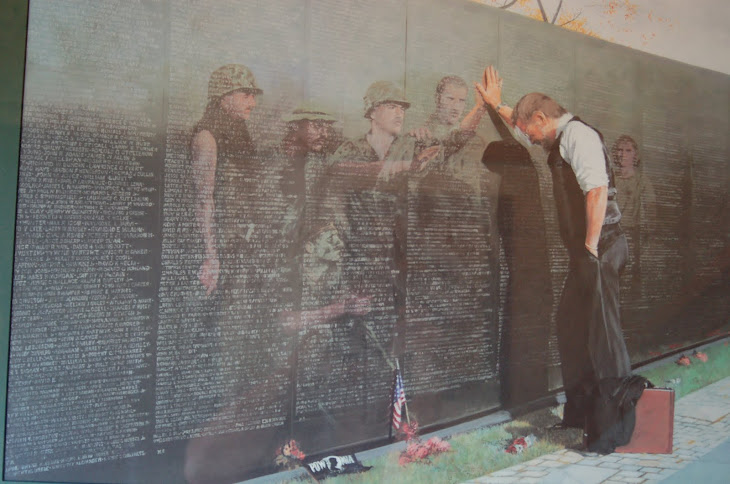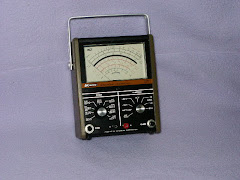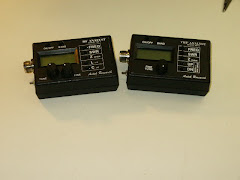 Here is a sample of the software display that controls the functions of the radio. This sample was taken from the Flex 1000D operating manual.As you can see, each of the functions are numbered, each function will be review as we go through the operation of the Power SDR Software.When the software is loaded and operational, moving the PC mouse over any of the functions will give a brief description of the control.
Here is a sample of the software display that controls the functions of the radio. This sample was taken from the Flex 1000D operating manual.As you can see, each of the functions are numbered, each function will be review as we go through the operation of the Power SDR Software.When the software is loaded and operational, moving the PC mouse over any of the functions will give a brief description of the control.If you click on the SDR Console displace above you will see that each field is numbered. The numbered fields will be used to describe the function of each, starting with #1.
(1) VFOA (Variable Frequency Oscillator) (A) -This VFO is the main tuning VFO for the radio. The frequency area is a simple text box and may be edited as such (click and drag, highlighting, etc.) Entering a numeric character (without any mouse interaction) is also a good way to change your frequency quickly. The underlined digit will show visually the digit that will be tuned when hovering over the frequency display with the mouse cursor.
The Band text information underneath the frequency gives the general information about the FCC Amateur bands as well as the Short Wave bands and WWV. If not on a recognized frequency, the text box will display "Out Of Band". If not in the Amateur Band, the text background will change from black to gray. This information is only a lookup in a database and has no bearing on the current operating mode.
(2) TUNING CONTROL -VFO lock keeps the frequency from being changed inadvertently. This is a handy feature to use while in a QSO to keep from accidentally losing the frequency due to clicking in the wrong area or hitting the wrong key on the keyboard.
The TUNE STEP - This displays the current tuning rate for using the mouse wheel (or Ctrl+Up/Down Arrow) to tune the radio. Rotating the mouse wheel away from you will increase the frequency by the step rate, click while rotating the mouse wheel toward you will decrease the frequency. You can change the Tune Step by clicking either of the -or+ buttons, clicking the mouse wheel button (or using Ctrl+Left/Right Arrow).
The SAVE button quickly saves a frequency, mode and filter. The saved frequency is shown in the box to its left. The RESTORE button restores the most recently saved frequency(displayed), mode and filter.
THE FOLLOWING DATA WAS UP-DATE AS OF 26 APR 09
(3) VFO B - Is similar to VFO A. However, VFO B is used only in specific instances. When operating split (SPLT button under VFO B determines the transmit frequency for (both VFO B and the frequency are displayed in red). When activating the second receiver (if installed) (Sub RX button under Sub RX, VFO B determines the second receiver frequency, which is displayed in yellow. Otherwise it can be used as a storage area to copy VFO data to and from VFO A.
(4) MULTIMETER - The mulitmeter function is another way of feeding information back to the user. The two drop down boxes at the top offer an independent selection of RX and TX multimeter options.
The text display below the meter selection shows the digital data for either the receiver or the transmitter. The display at the bottom of the multimeter section shows the data graphically as an edge meter. A bar graph display can be selected instead.
RX METER - Signal (Signal Level): Calculates the true RMS power in dBm of the current signal within the passband.
Sig Avg - (Signal Average): Calculates the true RMS power in dBm of a time-averaged signal within the passband.
ADC L (Analog To Digital Left): Calculates the level in dBFS (decibel full scale) of the Left input from the sound card.
ADC R ( Analog To Digital Right): Calculates the level in dBFS (decibel full scale) of the Right input from the sound card.
OFF: Used for debugging purposes or to save CPU cycles on slower machines.
 Starting at the upper left corner of the rear panel you will find the DC input terminals. 13.8VDC - #12 AWG or greater power cord should be used for 100W operation. The far left connector is a BNC type used for 100W Power Amplifier Antenna Connector. (This antenna connector is used for all bands if the 100W amplifier is installed). The connector located toward the top center of the rear panel is an Auxiliary Input Connector for an optional External Reference Oscillator.
Starting at the upper left corner of the rear panel you will find the DC input terminals. 13.8VDC - #12 AWG or greater power cord should be used for 100W operation. The far left connector is a BNC type used for 100W Power Amplifier Antenna Connector. (This antenna connector is used for all bands if the 100W amplifier is installed). The connector located toward the top center of the rear panel is an Auxiliary Input Connector for an optional External Reference Oscillator.









